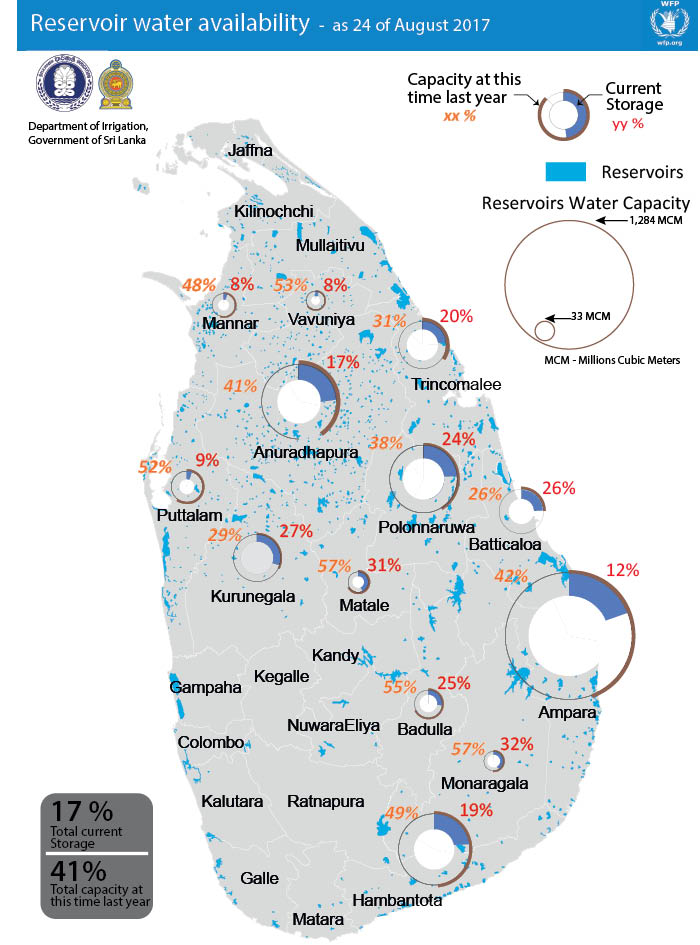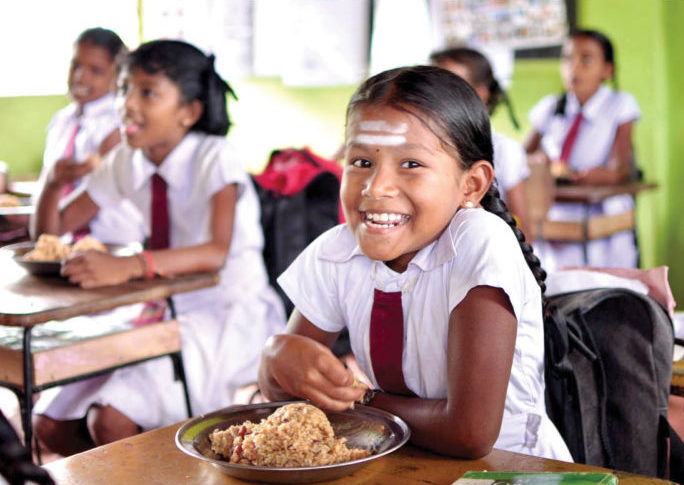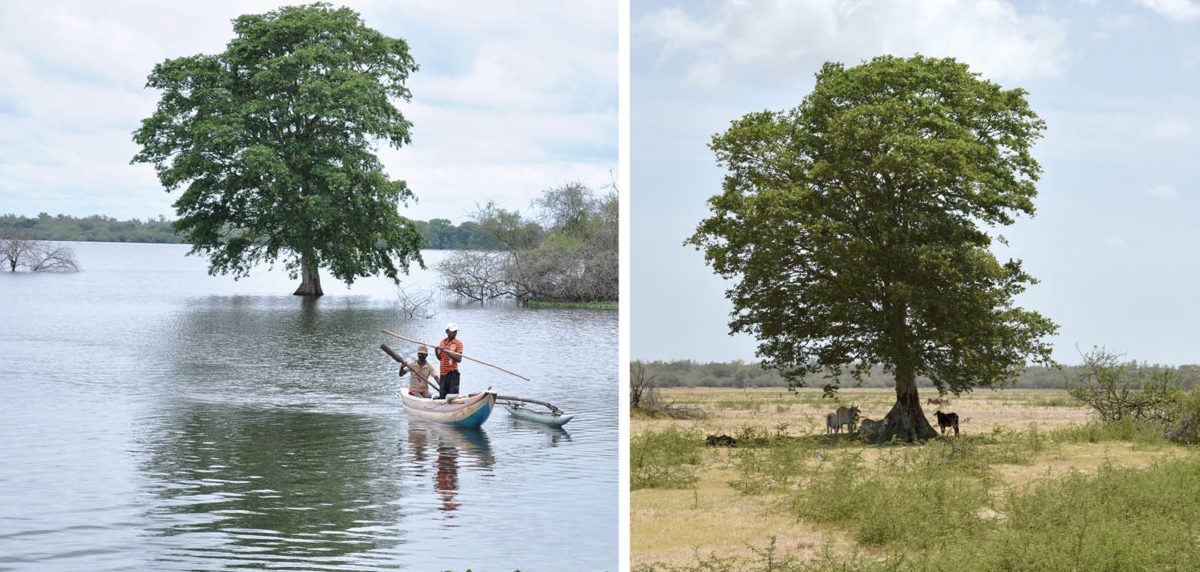Worst drought in 40 years, coupled by the worst floods in 14 years, a cruel recipe to threaten Sri Lanka’s food security, says Brenda Barton, Sri Lanka Country Director for the United Nations World Food Program (WFP).
The food security of some 900,000 people was threatened, according to a report published by the Food and Agriculture Organization of the United Nations (FAO) and the WFP.
Total paddy production in 2017 is forecast at 2.7 million tons, almost 40 percent less than the last year’s output and 35 percent lower than the average of the previous five years, the report earlier this summer added.
“Now, as we enter the Maha, being the main season, the need for a very successful outcome becomes more critical. We will continue to monitor closely the progress and any negative impacts on the community,” Barton says.
 Mobile technology was deployed by the WFP in Sri Lanka to contact communities. We can gauge the situation through this technology, for example, we can see if children are being taken out of school or other triggers and hardships being faced by communities, Barton says.
Mobile technology was deployed by the WFP in Sri Lanka to contact communities. We can gauge the situation through this technology, for example, we can see if children are being taken out of school or other triggers and hardships being faced by communities, Barton says.
This information is passed on to government ministries and the international community, so they can respond to shocks.
In addition, crucial data is collected to build resilience against vulnerabilities.
“For example, in the case of a drought; a plan to have better access to water. The WFP has been working on rehabilitating some of the tanks and helping families to grow more drought resistant crops, including crops that yield higher market value,” Barton said.
Try to move away from rice which is drought prone crop, while entering organic farming. Therefore, they can have fruits and vegetables year-round, instead of relying on one livelihood and one growing season.”
Public sector investment, and government policy are essential in building resilience for the future, she added.

625,000 acutely malnourished children, Sri Lanka has the third highest prevalence of wasting in the world.
Nutrition a major issue
Acute malnutrition is a major issue the WFP is tackling in Sri Lanka. Prevalence of wasting, underweight, low birthweight and anemia levels have either been stagnant or increasing. Wasting, like stunting, appears to be higher among older children. 360,000 children aged 6-12 are underweight and 140,000 are anemic. Thinness among primary school children is increasing from 17.5% in 2007 to 30.2% in 2016, according to a WFP report.
With 625,000 acutely malnourished children, Sri Lanka has the 3rd highest prevalence of wasting in the world, followed by Djibouti and South Sudan, it added.
Reports indicate that food insecurity clearly affects school children, particularly in the Northern Province where school systems were affected by the conflict; and the estate sector, comprised of tea or rubber plantations, in Central and Uva Provinces, where overall health, and socioeconomic indicators are the poorest in the country.
Since 2013, the Government of Canada has been providing funding to the government’s school meals programme to assist 160,000 children in the Northern Province. Canada’s contribution has provided a critical nutritional supplement – vegetable oil and pulses – which is distributed alongside the government’s own contribution of locally–grown rice.
The School Meals Programme (SMP) strengthens the social safety net by providing children with a free daily meal in schools, thus contributing to improved attendance and concentration.
WFP is planning a gradual handover of their support to the school meals programme to the government of Sri Lanka. However, in order to do this, whilst integrating a sustainable structure for providing home grown school meals, the programme in the vulnerable north needs to continue without disruption alongside extra support to fill the gaps in the estate sector.

